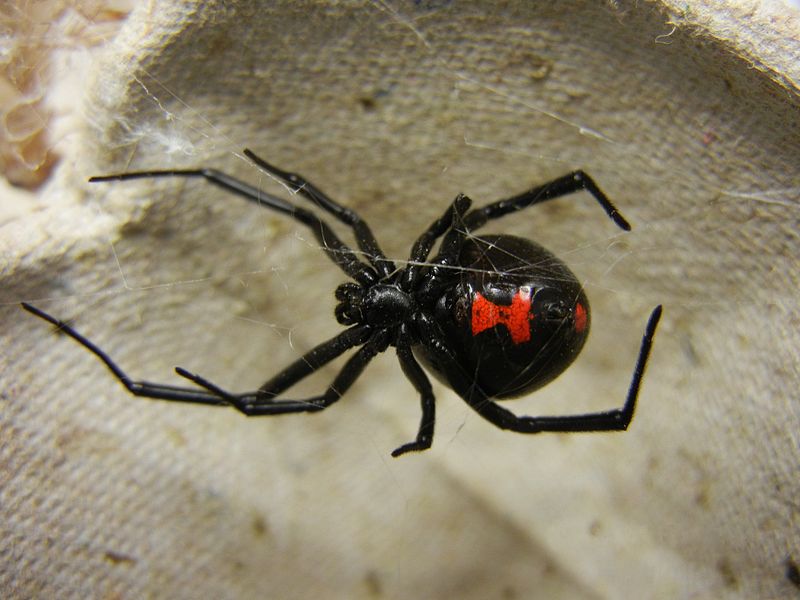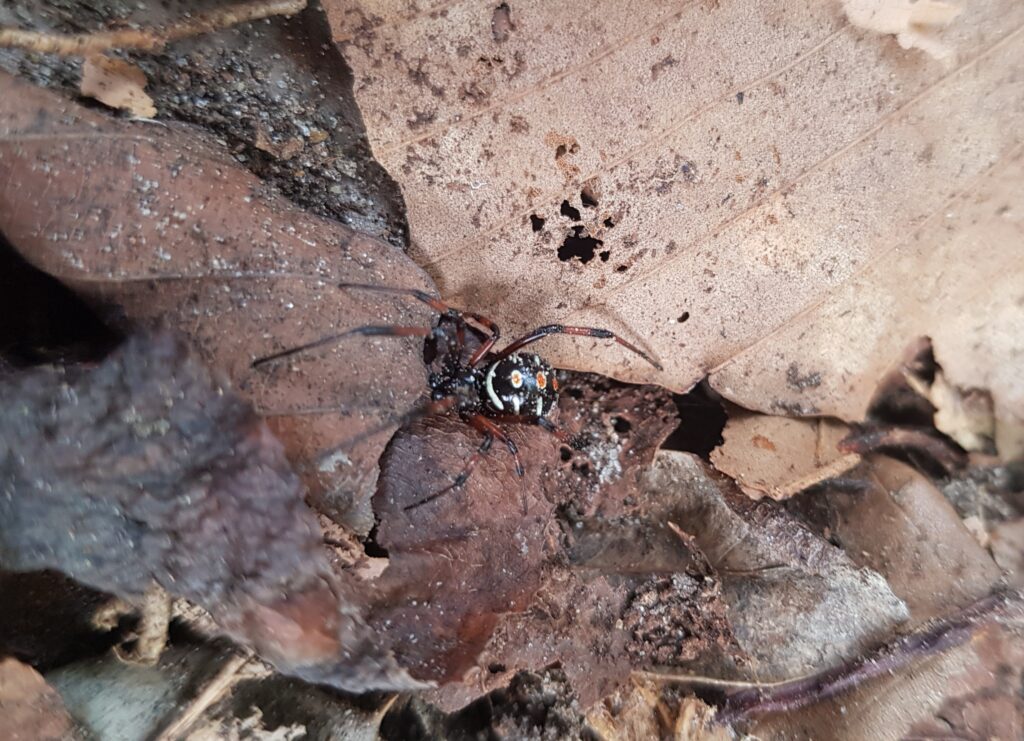#Arachtober: Black Widow
Today’s #Arachtober post is going to feature a highly misunderstood group of spiders: the black widows. In Maryland, we have two species of black widow spider- the northern (Latrodectus variolus) and the southern (Latrodectus mactans).

Contrary to popular belief, these spiders are not very aggressive and have relatively poor eyesight. The females mostly rely on the “good vibrations” in their messy webs to find their way around. The webs are strong and sticky, perfect for catching delicious prey.
Males will spin a semen-laden web that allows them to fill up their pedipalps with the fluid before hitting the road to look for an eligible female. Using chemical cues, he will wander along until he finds the right one and then will gently pluck the strands of her web as he ambles along, hoping to catch her attention. Once he approaches her, he will gently tap on her to gauge interest and will insert his pedipalps if things work out. Interestingly enough, sexual cannibalism isn’t as common in the black widow world as you might be led to believe. However, if he overstays his welcome, or she is hungry, well, his luck will run out quickly. Girls gotta eat, ya know.

Fortunate males will move on to find the next mate while the females will store and use the sperm at will to produce eggs. She can actually live for a couple of years. Several hundred eggs are laid in a sticky cocoon, taking almost 3 weeks to incubate before they hatch. After hatching, the spiderlings often hang out in their protective sac for a bit to grow before they head out on their own.
Black widows are renown for their venom which is medically significant. It contains α-Latrotoxin, a neurotoxin which causes muscle spasms, muscle pain, and a rigid abdomen. There are other chemicals in the venom which exert additional symptoms. Interestingly enough, black widows, much like venomous snakes, can meter their venom and can deliver dry (no venom) bites or can inject different levels of venom based on perceived threat. A fascinating study, Poke but don’t pinch: risk assessment and venom metering in the western black widow spider, Latrodectus hesperus, found that black widow spiders have to really be harassed to not only bite but also to deliver venom. One of the biggest takeaways: don’t pinch a lady’s butt. Female black widows have the toxic venom, and pressing down on their abdomens (butts) resulted in the most amount of venom being delivered. However, poking the widows mostly caused them to avoid the offending finger. [Side note: don’t harass spiders, mmmm kay?].
Black widows aren’t just hunters, but they are hunted, too. Mud dauber wasps, in particular, seem to fancy spider prey for their youngsters and will definitely paralyze black widows to leave for their babies if available. You can read more about this relationship on my friend, Bug Eric’s Blog here: http://bugeric.blogspot.com/2010/08/wasp-wednesday-blue-mud-dauber.html.
#arachtober #blackwidow #maryland #venom
